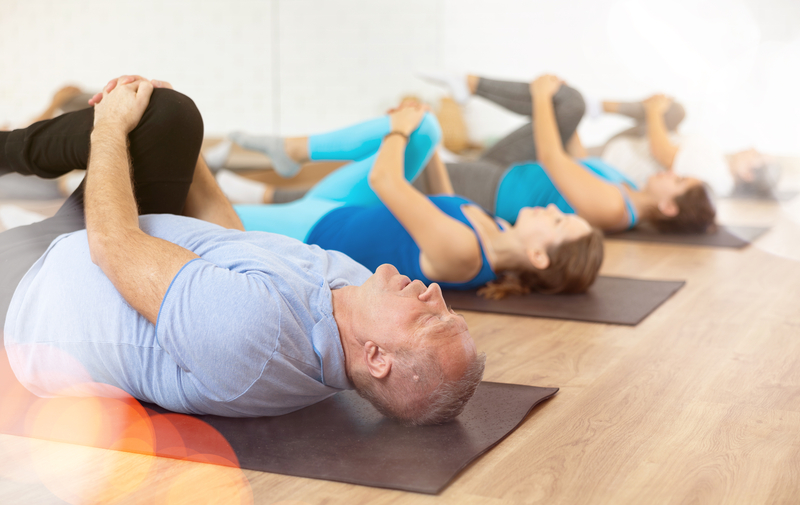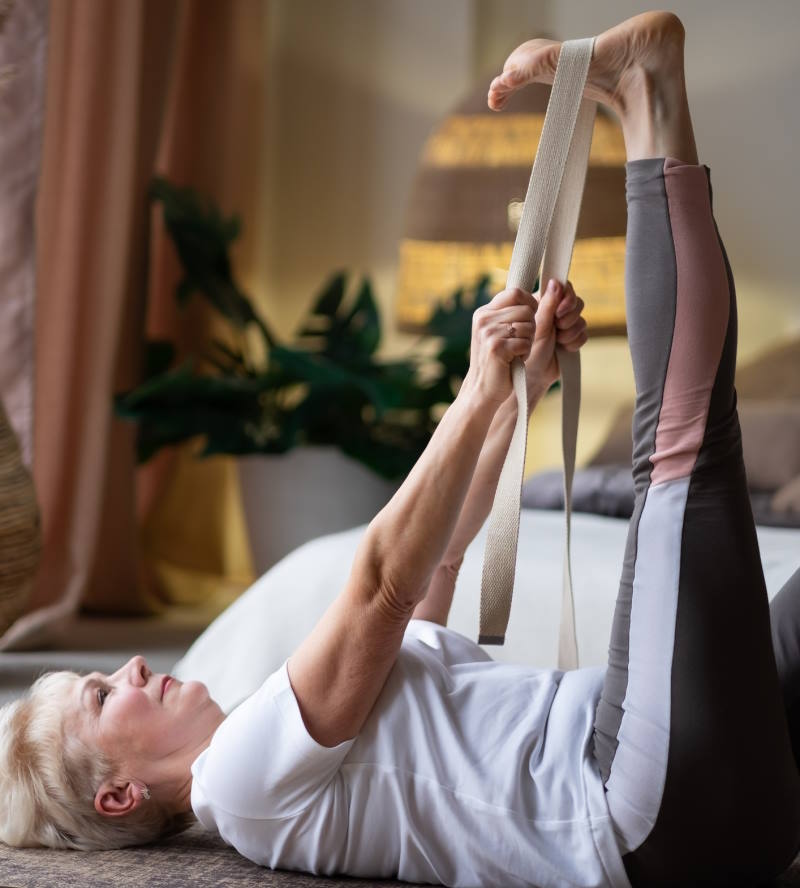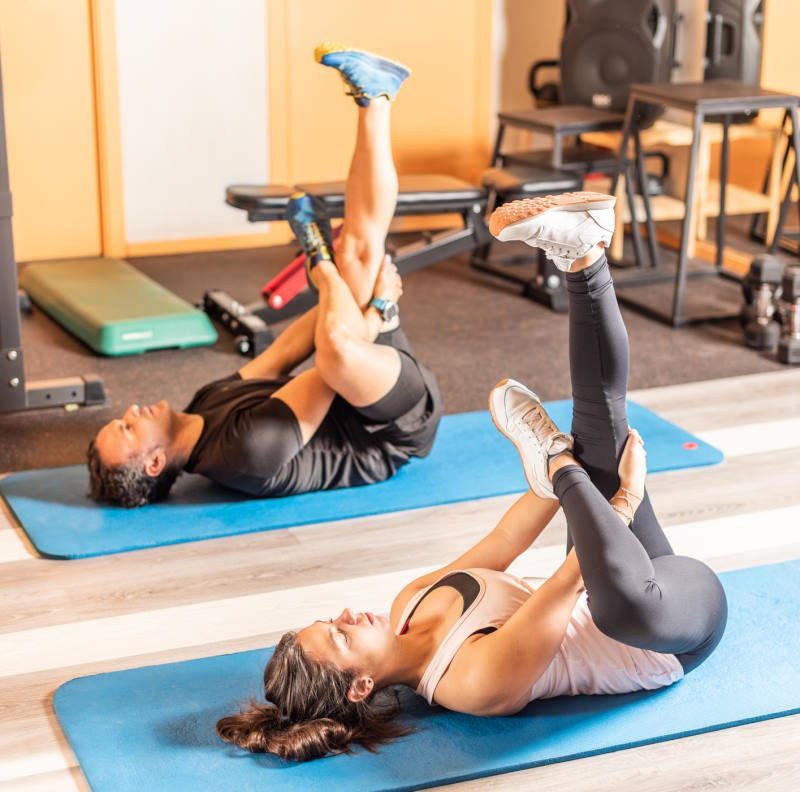Nerve Gliding: Is it the Key to Increased Flexibility and Pain Management?

Have you heard of nerve gliding? If you haven’t, and you’re in any kind of nerve pain, you might want to take a deeper dive into this type of exercise that could help soothe those angry nerves to make movement easier and reduce pain levels.
What Is Nerve Gliding?
If you’ve never heard of nerve gliding, you’re certainly not alone. This gentle manipulation of the tissues surrounding your nerves, and the nerves themselves, is a technique used by physical therapists, chiropractors, and even trainers.
Also called nerve flossing, neural gliding, neurodynamics, nerve mobilization, neuro physiotherapy, and nerve stretching, these simple exercises could help reduce pain and improve mobility. While “flossing” and “gliding” may seem alarming at first glance, the exercises are, in actuality, gentle stretches. In fact, that is the key. You want these exercises to be very gentle to provide relief.
Nerve gliding may help release compressed or injured nerves and free up the surrounding tissues for enhanced flexibility and functionality. The gentle stretching and tension placed on the nerves can bring a wealth of health benefits.
First, though, a disclaimer. Before trying any of these exercises, please use common sense and avoid any that make any pain you have worse. It’s always a good idea to consult your personal healthcare practitioner, therapist, or trainer to ensure you have good form, especially if you are recovering from an injury. Pushing the stretches or overdoing it can have the opposite effect, so always err on the side of less is more if you’re new to nerve gliding.
Who Should Try Nerve Gliding?
If you have any of the following conditions, you could be a good candidate for nerve gliding:
- Muscle strain or tightness
- Plantar fasciitis
- Sciatic nerve pain
- Herniated discs
- Pinched nerves in your back or neck
- Carpal, cubital, tarsal tunnel
- Piriformis syndrome
- Nerve conditions around the neck and shoulder region
Nerve gliding can also be an excellent way to assist in rehabbing after surgery or to potentially avoid surgical intervention in the first place. Discuss this with your PT, who can provide more specific suggestions.
What Happens When Nerves Get Trapped?
What can happen if you don’t release the nerves? You might experience fluid retention and swelling, blood flow or oxygen restriction, and possibly even the development of scar tissue. When exposed to these conditions, nerves lose their ability to move freely and without pain, which translates to limited movement and a lack of flexibility.
How to Nerve Glide
Now that you know more about nerve gliding, you’re probably ready to try it yourself. While you can use nerve gliding for a variety of conditions, these exercises can help with the most common injuries and pain:
Sciatica Knee to Chest Stretch—start by lying on the ground, face up, with your legs fully extended. Next, bend your right leg and bring your knee up to your chest. Place your hands around your knee and gently pull your knee toward you, feeling a stretch through your hips and lower back. Pull your leg in toward your chest until you reach the top of your range of motion. Holding onto the knee, “pump” and release your thigh into your chest three to four times. Then, release your leg and move it back to the starting position. Repeat with your left leg. Repeat on each side about ten times.

Alternatively, you can hold the back of your thigh and straighten your leg until you feel a stretch (hold for a count or two) and then bend the knee, again repeating three or four times. You may also find it helps to flex and point your foot. That is, point your foot as it goes up and then flex the foot at the top and as you bend the knee to bring the foot back down.
Hamstring Nerve Glide—you’ll need a towel or a band for this exercise. Start by lying on your back on a mat with your knees bent and your feet flat on the ground, mat, or even bed. Wrap the towel or band around your right foot so that you can comfortably pull your leg up and toward you. Keep your leg straight (without locking the knee) as you do this, and pull until you feel a good stretch in your hamstring.
At the same time as you’re pulling your leg upwards, also lift your head and bend it forward. As you release your leg back to the starting position, allow your head to also move back until your head rests on the mat. Again, you can add pointing and flexing of the foot to the movement. Repeat at least ten times (or for 30 seconds) and then move to the other leg.

Piriformis Syndrome Stretch—begin by lying on your back with your knees bent and feet flat on the floor. Lift your right leg and bring your foot across your body, placing the side of your ankle on your left knee. Next, reach behind your left knee and pull it toward you, feeling a good stretch through your hamstrings and glutes. Hold the stretch for ten to 30 seconds and repeat on the opposite side.

Nerve Gliding for Thoracic Pain (Arm, Neck, and Shoulder)—stand and bring your arms behind your back, grasping your hands together. Pull your shoulders back and then perform a shrug. Move your head forward and back, and then release the shrug as you breathe out to relax, moving your head forward and back again. Repeat about ten times.

Nerve Gliding for Median Nerve Pain (for Carpal Tunnel and More)—start by extending your right arm out to your side with your palm up in a horizontal position at shoulder height. Next, simultaneously tip your head to the left as you move your hand downward so that your palm is vertical. Bring your palm back to a horizontal position as you tip your head to the right. Repeat ten times on your right side and then repeat on the left.
Note: a specific carpal tunnel flossing exercise you can do is to extend your arm as above, make a fist, and then release. Once you release, gently pull your thumb back to feel a good stretch.
Nerve Gliding for the Radial Nerve (for Upper Extremities)—start by standing with your feet about hip-width apart and your arms at your sides. Next, lift your right arm away just a little behind you and slightly out with your palm facing the back of the room. Then, bend your wrist to bring your palm up toward the ceiling. Next, push your arm back, release, and repeat five times on the right before performing the same movements on the left side.
So, is nerve gliding the key to increased flexibility and pain management? The answer is often a resounding yes! If you are suffering, by all means, add these exercises to your stretching routine. That said, whether you’ve been experiencing pain or tension or just want to increase flexibility, you’ll want to start slowly and move gently. Otherwise, you could aggravate your nerves. You want to encourage them to glide smoothly, so start with less as your nerves learn to relax, release, and glide.





